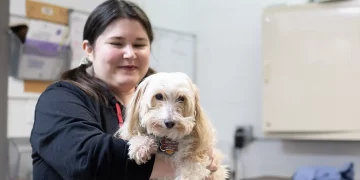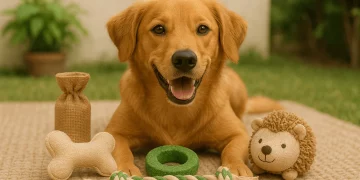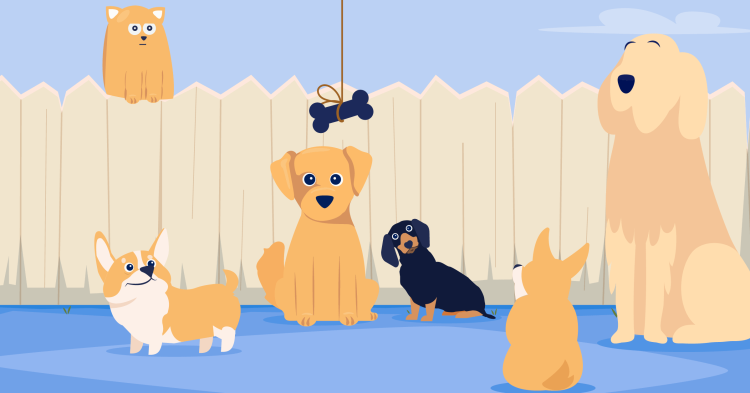Training your pet can often seem like a daunting task, but with the right approach, it can be a fun and rewarding experience for both you and your furry companion. One of the most effective and humane methods of training pets is positive reinforcement. This method relies on rewarding your pet for displaying desired behaviors, encouraging them to repeat those behaviors in the future. Positive reinforcement is based on the principle that behaviors followed by positive outcomes are more likely to be repeated. This approach can be used to train dogs, cats, and even small animals like rabbits and guinea pigs.
In this article, we’ll explore how positive reinforcement works, its benefits for both you and your pet, and practical steps to effectively use rewards in training. Whether you’re trying to teach basic commands, solve behavioral issues, or strengthen the bond with your pet, positive reinforcement offers a simple and effective solution.
What is Positive Reinforcement?
Positive reinforcement is a behavioral training technique that involves rewarding a pet for engaging in a specific behavior. The goal is to increase the likelihood of that behavior being repeated. The rewards can include treats, toys, praise, or even playtime—anything your pet finds motivating.
This form of reinforcement relies on the understanding that animals, much like humans, are more likely to repeat actions that result in a pleasurable outcome. For example, if your dog sits on command and receives a treat as a reward, they are more likely to sit on command again in the future because they associate sitting with a positive experience.
Unlike traditional punitive methods, positive reinforcement does not involve punishment or negative consequences. It focuses on the reward aspect, creating a strong bond between pet and owner built on trust and cooperation.
The Science Behind Positive Reinforcement
At the heart of positive reinforcement lies the science of operant conditioning, a type of learning in which behaviors are controlled by their consequences. Operant conditioning is based on four types of consequences:
- Positive Reinforcement: Adding a pleasant stimulus (such as a treat or praise) to increase the likelihood of a behavior being repeated.
- Negative Reinforcement: Removing an unpleasant stimulus (such as stopping a loud noise) to increase the likelihood of a behavior being repeated.
- Positive Punishment: Adding an unpleasant stimulus (like scolding or a shock) to decrease the likelihood of a behavior being repeated.
- Negative Punishment: Removing a pleasant stimulus (such as taking away a toy) to decrease the likelihood of a behavior being repeated.
Of these, positive reinforcement is generally regarded as the most effective and humane method for training pets. It encourages desired behavior while maintaining a positive and stress-free environment. Over time, pets learn to associate the desired behavior with a reward, reinforcing that behavior.
Benefits of Positive Reinforcement
The use of positive reinforcement offers numerous benefits for both you and your pet. Below are some key advantages of this training method:
1. Builds a Stronger Bond
Positive reinforcement fosters a positive relationship between you and your pet. Instead of focusing on punishing undesirable behaviors, positive reinforcement emphasizes rewarding good behavior, which builds trust and strengthens your bond. Pets who are trained with positive reinforcement are generally more responsive and eager to please their owners.
2. Promotes Learning and Motivation
Because the focus is on rewarding desirable behaviors, pets are more motivated to engage in behaviors that lead to rewards. This creates a positive feedback loop in which your pet learns faster and enjoys the process. Whether you’re teaching basic commands or more complex tricks, your pet is more likely to remain engaged and enthusiastic about the learning process when rewards are part of the equation.
3. Reduces Anxiety and Stress
Unlike punishment-based training, which can cause fear and anxiety, positive reinforcement creates a safe and stress-free environment for your pet. When your pet is rewarded for good behavior, they are less likely to develop behavioral issues such as anxiety, aggression, or fearfulness. Positive reinforcement encourages pets to learn through enjoyable experiences rather than through fear of punishment.
4. Improves Behavior Long-Term
Positive reinforcement not only teaches pets to exhibit desired behaviors but also helps maintain them over time. When pets consistently receive rewards for specific behaviors, they learn to repeat those behaviors without the need for constant supervision or intervention. This leads to lasting changes in behavior and encourages your pet to act appropriately in a variety of situations.
5. Works for All Animals
Positive reinforcement is not limited to just dogs. It can be used with virtually all animals, including cats, rabbits, guinea pigs, birds, and even horses. The key is identifying what motivates your pet—whether it’s treats, praise, toys, or something else—and using that reward to reinforce the behavior you want to encourage.

How to Implement Positive Reinforcement in Pet Training
Now that we’ve covered the benefits of positive reinforcement, let’s look at practical steps to effectively implement this training method with your pet.
1. Choose the Right Reward
To use positive reinforcement effectively, you first need to identify what motivates your pet. This could be a special treat, their favorite toy, or praise. Make sure the reward is something that your pet values and is willing to work for. For example, some pets may be more motivated by treats, while others may prefer toys or physical affection.
2. Be Immediate with Rewards
Timing is crucial when using positive reinforcement. The reward should be given immediately after your pet performs the desired behavior. This helps your pet connect the action with the reward. For example, if you’re training your dog to sit, reward them with a treat as soon as their bottom hits the ground. If the reward is delayed, your pet may not understand which behavior is being reinforced.
3. Start with Simple Commands
When starting out with positive reinforcement, begin with basic commands that are easy for your pet to understand. For dogs, commands like “sit,” “stay,” and “come” are great starting points. For cats, you can begin with basic tricks such as teaching them to “high-five” or “sit” on command. Make sure to break down training into simple steps, and reward your pet for each step they master.
4. Be Consistent
Consistency is key when using positive reinforcement. Make sure to use the same cues (both verbal and physical) each time you train your pet. If you’re teaching your dog to sit, use the same word and hand gesture every time. Consistent training helps your pet understand what you expect and makes it easier for them to repeat the behavior.
5. Gradually Increase Difficulty
Once your pet masters a simple command, you can gradually increase the difficulty level. For example, you can increase the length of time they must hold a sit position before receiving a reward or increase the distance between you and your pet when practicing the “come” command. Always ensure your pet is ready for the next level of training before progressing.
6. Use Reinforcement to Shape Behavior
In addition to rewarding complete behaviors, you can also use reinforcement to shape behavior incrementally. For example, if you’re teaching your pet to roll over, you can reward small steps along the way, such as lying down or turning onto their side, before rewarding them for completing the full roll-over. This process is known as shaping and is very effective for teaching complex behaviors.
7. Don’t Overuse Rewards
While it’s important to reward your pet for good behavior, it’s equally important not to overuse treats or rewards. If your pet becomes too reliant on treats, they may expect a reward every time they follow a command. Gradually reduce the frequency of treats while continuing to offer praise and affection, so that your pet learns to respond to commands without always expecting a tangible reward.
Common Mistakes to Avoid with Positive Reinforcement
While positive reinforcement is a highly effective training method, there are some common mistakes pet owners make that can hinder the training process. Here are a few mistakes to avoid:
1. Inconsistent Rewarding
If you reward your pet inconsistently, they may become confused about what behaviors are expected. Make sure to reward the desired behavior every time, at least initially, so that your pet understands which actions are being reinforced.
2. Too Much Rewarding
Over-rewarding can lead to spoiled behavior and dependence on rewards. Gradually fade out the use of treats as your pet becomes more proficient with the behavior. Instead, use verbal praise, affection, or playtime as an alternative reward.
3. Punishing Unwanted Behavior
Positive reinforcement works by focusing on rewarding the good, not punishing the bad. If your pet exhibits unwanted behavior, avoid punishing them. Instead, redirect their attention to a more positive activity and reward them when they engage in it.
4. Not Adjusting Rewards to Your Pet’s Preferences
Different pets are motivated by different things. What works for one pet may not work for another. Experiment with different types of rewards to see what best motivates your pet and adjust your approach accordingly.
Conclusion
Positive reinforcement is one of the most effective, humane, and enjoyable methods of training your pet. By rewarding your pet for desired behaviors, you not only encourage them to repeat those behaviors but also strengthen the bond between you and your pet. Whether you’re teaching basic commands, solving behavioral issues, or simply deepening your connection with your companion, positive reinforcement can make the process more enjoyable and successful.
With patience, consistency, and the right rewards, you can effectively train your pet while ensuring they feel loved, respected, and understood. Happy training!























































